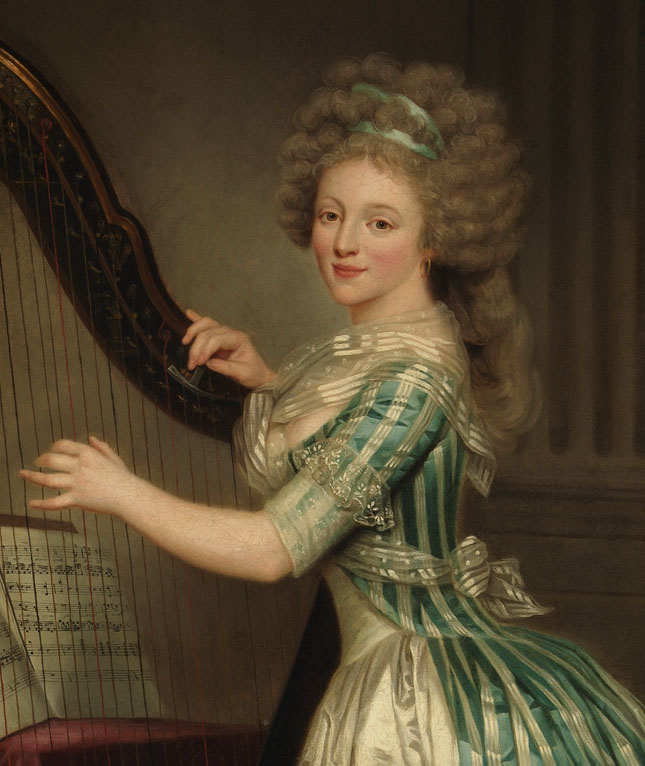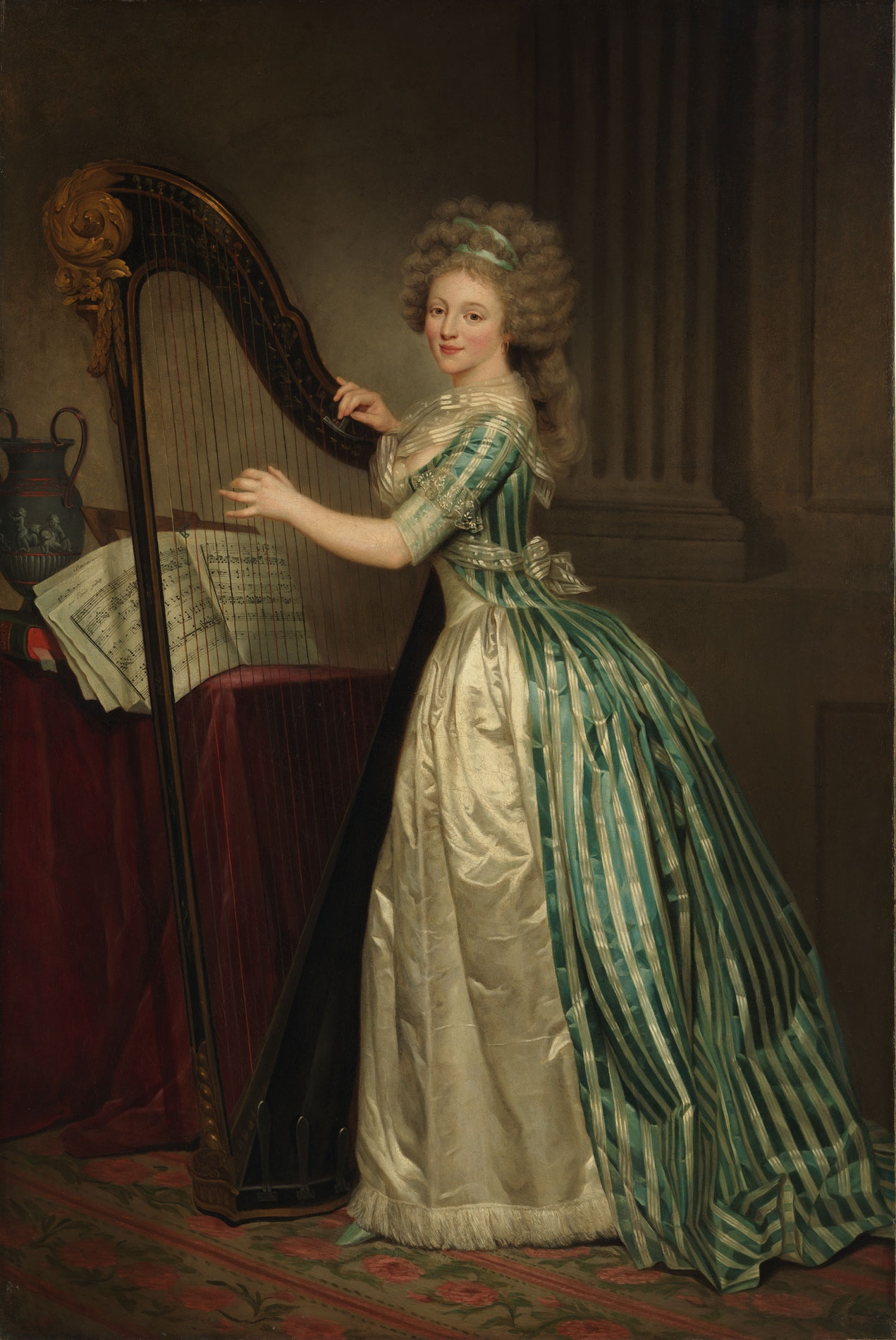The portrait in the center of the Tessé Room is a self-portrait by Rose Adélaïde Ducreux (1761 – 1802). Enlightenment individualism encouraged unprecedented numbers of women to start professional painting careers. Although they were discouraged in many ways by the official arts institutions that governed French painting from attempting historical, mythological, or religious subjects, portraiture was more open to them. Just before, during, and after the French Revolution, woman painters made many innovative full-length portraits, both of themselves and others.
Like many other talented women painters, Rose Adélaïde Ducreux was trained by her father, Joseph Ducreux, who served as portraitist to Marie Antoinette. The Ducreux family was especially close with the French royal family; Rose’s younger sister, Antoinette Clémence, was Marie Antoinette’s goddaughter. Despite the family’s courtly connections, neither Joseph nor Rose were members of the Académie Royale de Peinture et de Sculpture, and were unable to exhibit at the official Salon until 1791, when admission was opened to everyone as a part of the French Revolution. Ducreux was a talented portraitist, and she frequently depicted herself in her work. Self-portraiture allowed an artist to create a persona, and here Ducreux shows off her ability as a musician, her youthful beauty, and her enlightened upbringing. She tunes her harp while sheet music, a thick novel, and a neoclassical vase decorated with cherubs sit on a table beside her.

With this portrait, Ducreux also testified to her skill as an oil painter, which her contemporaries found enchanting. “A new muse has appeared with a spark and she paints herself under the forms of Terpsichore,” said one admirer, referring to the Greek muse of chorus and dance, while another complimented her “graceful body” and “fabrics of the highest truthfulness,” and a third proclaimed “you are steeped in graces, Mademoiselle.” While women were encouraged to study music and the arts, it was not a common or accepted career. Female artists like Ducreux had to soften the perceived masculinity of their craft by depicting very feminine subjects: Ducreux’s three known self-portraits all depict her with musical instruments and books, coquettishly looking out at the viewer. Ducreux depicted exactly what her contemporaries wanted in a female artist: beauty, charm, talent, and the ability to play the role of muse.
